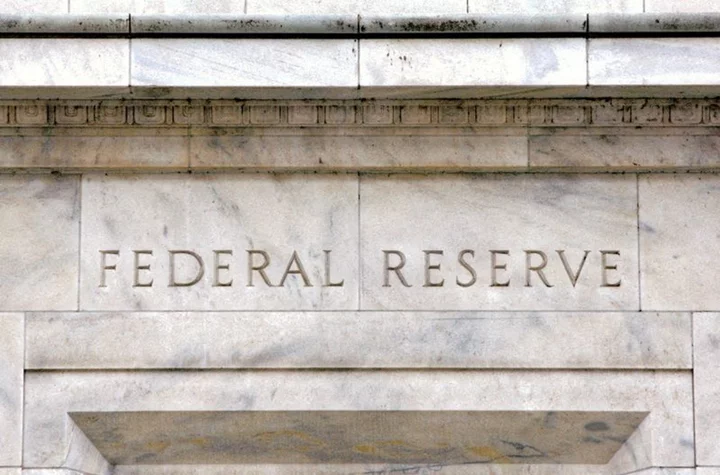A look at the day ahead in U.S. and global markets by Mike Dolan
If markets had been hoping the Federal Reserve might be minded to push back against the relentless rise in U.S. bond yields, they've been sorely disappointed already this week.
Just as 10-year Treasury yields topped 4.70% for the first time sine 2007 and the dollar built another head of steam, Fed officials stuck to their message that one more interest rate hike this year was still on the cards and rates wouldn't be coming down for some time after that.
"I remain willing to support raising the federal funds rate at a future meeting if the incoming data indicates that progress on inflation has stalled," Fed Governor Michelle Bowman said.
That thought was echoed by Cleveland Fed chief Loretta Mester, who said: "I suspect we may well need to raise the fed funds rate once more this year."
Fed Vice Chair for Supervision Michael Barr struck a more equivocal note, claiming the debate was less about another hike than how long rates stayed high.
Either way, this is not the sound of a Fed who thinks the inflation battle is won.
And the latest business soundings for September may have emboldened them to stay vigilant amid further signs the U.S. economy actually re-accelerated in the third quarter.
U.S. manufacturing picked up faster than forecast to its highest level of the year and employment appears to be expanding in the sector. Even though The Institute for Supply Management's factory index remains in contractionary territory overall - the longest stretch since the 2007-2009 Great Recession - activity is clearly building again.
The good news for inflation worriers is that the prices paid by those businesses fell by more than 5 points during the month.
What's more, the recent spike in crude oil prices appears to be going into reverse again.
Ahead of the OPEC+ meeting on Wednesday, crude oil prices fell back to their lowest in three weeks - dipping back below $88 per barrel and dragging year-on-year gains down to just 5%.
But in another pivotal week for U.S. labor data culminating in the September employment report on Friday, attention will flip to August job openings numbers later on Tuesday for clues about the ongoing tightness of the jobs market - central to the Fed's deliberations.
Fed hawkishness, however, has kept futures markets pricing a 50-50 chance of another quarter point rate hike to the 5.50-5.75% range by year-end.
Whether the weekend's stopgap measure to keep U.S. government open until Nov. 17 just builds more uncertainty into that year-end period leaves markets on edge entering the final quarter.
Rising 10-year nominal and real yields grind on regardless - as the Fed view combines with a rethink of a more high pressured economy longer-term as well as negative market dynamics and positioning.
A so-called 'bear steepening' of the 2-10 year yield curve to its least inverted in five months is an aggravator for bond funds, as is hedge fund activity that sees these speculators reluctant to cover huge short positions in Treasury futures.
Bond volatility captured by the MOVE index hit its highest in almost six weeks on Monday.
The dollar continues to be the big beneficiary - hitting its highest level of the year against the euro and only balking at a one-year high at 150 yen due to wariness of Bank of Japan intervention.
The Australian dollar skidded to its lowest level of the year after the Reserve Bank of Australia left its key policy rate unchanged at 4.10% overnight.
For U.S. stocks, the picture is harder to parse - as investors juggle the better U.S. growth projections with the higher-for-longer rate squeeze.
As the third-quarter earnings season hoves into view this month, the S&P500 held the line on Monday despite climbing long-term borrowing rates and Big Tech stocks, typically most sensitive to interest rates, outperformed.
And futures were a smidgen higher again ahead of Tuesday's bell.
In company news, Birkenstock - the German premium footwear brand backed by private-equity firm L Catterton - targeted a fully diluted valuation of about $10 billion in its highly anticipated U.S. initial public offering, according to filings.
And British online fashion retailer Boohoo dropped 10% after it said revenue fell 17% in the six months to August and warned of a similar decline for the full year.
Key developments that should provide more direction to U.S. markets later on Tuesday:
* US Aug job openings data
* Atlanta Federal Reserve President Raphael Bostic speaks
* U.S. Treasury auctions 12-month bills
* U.S. corporate earnings: McCormick
(Reporting by Mike Dolan; Editing by Susan Fenton)









